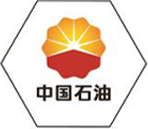
Dec . 04, 2024 16:43
Back to list
Design and Functionality of Cyclone Separators in Industrial Applications
Understanding Cyclone Separators Principles and Applications
Cyclone separators are widely used industrial devices that harness centrifugal force to separate particles from gases or liquids. They play a crucial role in various applications, including air pollution control, particle separation in chemical processes, and in the grain milling industry, among others. This article delves into the principles of operation, design features, and the significance of cyclone separators in modern processes.
Principles of Operation
At the core of a cyclone separator's operation is the principle of centrifugal force. When a mixture of gas or liquid is introduced into the cyclone, it flows through a tangential inlet. This design causes the incoming stream to spin, creating a vortex. As the vortex forms, denser particles are forced outward due to centrifugal force, moving towards the wall of the cyclone.
Once at the wall, particles lose kinetic energy and settle downward into a collection hopper. Meanwhile, the cleaner gas or liquid spirals upward along the cyclone’s center and exits through a top outlet. This separation process is efficient and can handle large volumes of mixtures, making cyclone separators highly effective in various industrial applications.
Design Features
The design of a cyclone separator is critical to its performance
. Key features include1. Inlet Design The shape and angle of the inlet affect the energy and direction of the incoming flow, which impacts separation efficiency. A properly designed inlet promotes optimal spiraling and minimizes turbulence.
2. Cylinder and Cone Shape The cylindrical section allows for effective swirling action, while the conical section aids in the downward movement of particulate matter. The dimensions of these sections can be tailored to specific applications to enhance performance.
3. Exit Configurations The design of the gas or liquid exit is equally important. An appropriate exit configuration helps in maximizing the quality of the separated stream and minimizing the loss of particulate matter.
cyclone separator

4. Material Selection Cyclone separators are often subjected to harsh operating conditions, necessitating robust materials that can withstand abrasion and corrosion. Steel, ceramic, and polymer materials are commonly used based on process requirements.
Applications in Industry
Cyclone separators are prevalent across multiple sectors. In air pollution control, they are employed to remove dust and particulate matter from industrial exhausts, thus playing a vital role in meeting environmental regulations. In the chemical industry, they are used for recovering powders, ensuring efficient material recovery while maintaining product purity.
In the oil and gas sector, cyclone separators are essential for separating water and solids from crude oil, allowing for more efficient processing and transportation. Additionally, in agriculture, they play a role in grain processing to separate chaff and other impurities from harvested crops.
Advantages of Cyclone Separators
One of the primary advantages of cyclone separators is their simplicity and low operating cost. They have no moving parts, minimizing maintenance requirements and operational downtime. Moreover, they are capable of handling high flow rates and are effective in a wide range of temperatures and pressures.
Cyclone separators also have a relatively small footprint compared to other separation technologies, making them suitable for various applications where space is limited. Their versatility allows for customization in design to suit particular needs, enhancing their application scope.
Conclusion
In conclusion, cyclone separators are essential devices in various industries, effectively separating particles from gases or liquids through the principle of centrifugal force. Their robust design, minimal maintenance needs, and cost-effectiveness make them an attractive choice for many industrial applications. As industries continue to evolve, the role of cyclone separators will likely expand, contributing to more efficient and environmentally friendly processes. Understanding their operation and applications can help businesses optimize their systems and comply with regulatory standards, ensuring a sustainable future.
Latest news
-
Safety Valve Spring-Loaded Design Overpressure ProtectionNewsJul.25,2025
-
Precision Voltage Regulator AC5 Accuracy Grade PerformanceNewsJul.25,2025
-
Natural Gas Pressure Regulating Skid Industrial Pipeline ApplicationsNewsJul.25,2025
-
Natural Gas Filter Stainless Steel Mesh Element DesignNewsJul.25,2025
-
Gas Pressure Regulator Valve Direct-Acting Spring-Loaded DesignNewsJul.25,2025
-
Decompression Equipment Multi-Stage Heat Exchange System DesignNewsJul.25,2025

